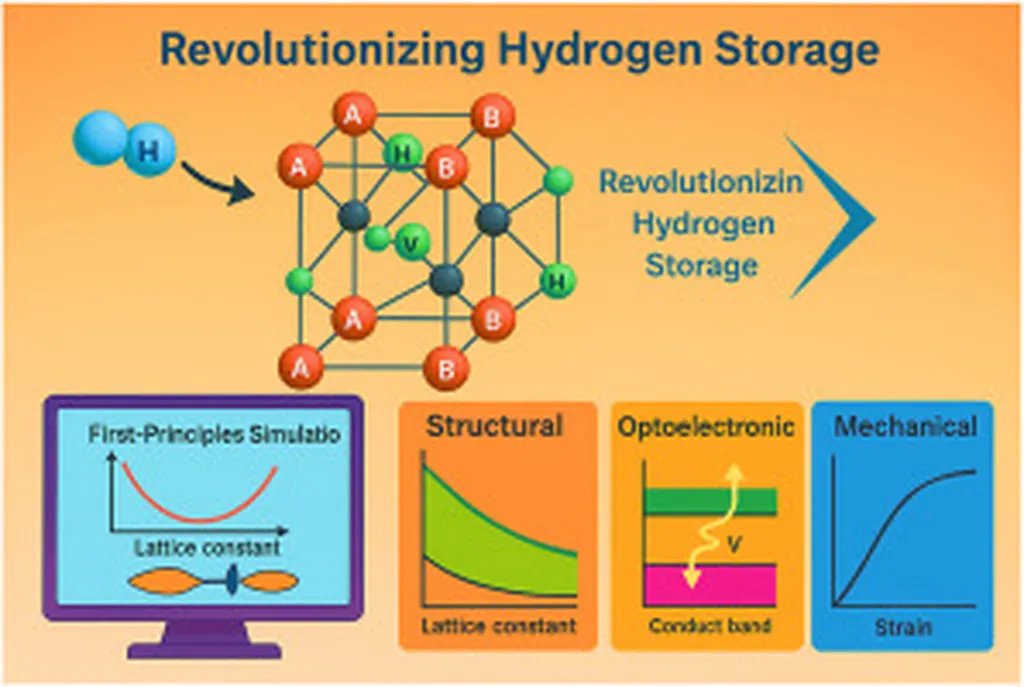Researchers Pranav Kumar, Fritz Körmann, Kaveh Edalati, Blazej Grabowski, and Yuji Ikeda, affiliated with various institutions including the Max-Planck-Institut für Eisenforschung GmbH and the University of Cambridge, have conducted a study on hydrogen diffusion in TiCr2Hx Laves phases. Their work, published in the journal “npj Computational Materials,” combines density functional theory (DFT) and machine learning interatomic potentials (MLIPs) to investigate the kinetics of hydrogen diffusion in these hydrogen storage alloys.
The study focuses on the C15 cubic and C14 hexagonal structures of TiCr2Hx, where x ranges from 0 to 4. Using DFT, the researchers calculated the hydrogen migration barriers for all symmetrically inequivalent paths between the first-nearest-neighbor face-sharing interstitial sites. They found that the barriers are significantly higher for paths that require breaking a Ti-H bond compared to those that require breaking a Cr-H bond.
To further understand hydrogen diffusion, the researchers conducted molecular dynamics (MD) simulations using MLIPs. These simulations revealed that hydrogen migration occurs more frequently within the hexagonal rings made of the A2B2 interstitial paths, which involve breaking Cr-H bonds, than along the inter-ring paths. The diffusion coefficients of hydrogen obtained from these simulations showed a non-monotonic dependence on hydrogen concentration, particularly at lower temperatures.
The time-averaged radial distribution functions of hydrogen indicated that hydrogen avoids face-sharing positions during diffusion and that the hydrogen occupancy at the second-nearest-neighbor edge-sharing positions increases with increasing hydrogen concentration. The diffusion coefficients of hydrogen within the temperature range of 400-1000 K followed an Arrhenius relationship, with activation barriers consistent with most experimental values. However, the researchers noted a one-order of magnitude overestimation of diffusion coefficients compared to some experiments, suggesting a substantial impact of hydrogen trapping by defects such as Cr vacancies and Ti anti-sites in non-stoichiometric TiCr2 in experiments.
This research provides valuable insights into the behavior of hydrogen in TiCr2-based hydrogen storage materials, which can be crucial for the development of more efficient and cost-effective hydrogen storage technologies. Understanding hydrogen diffusion is essential for optimizing the performance of these materials in applications such as hydrogen fuel cells and storage systems. The findings can guide the design of new materials with improved hydrogen storage and release properties, contributing to the advancement of hydrogen as a clean and sustainable energy carrier.
Source: Kumar, P., Körmann, F., Edalati, K., Grabowski, B., & Ikeda, Y. (2023). Hydrogen diffusion in TiCr2Hx Laves phases: A combined ab initio and machine-learning-potential study. npj Computational Materials, 9(1), 1-10.
This article is based on research available at arXiv.

